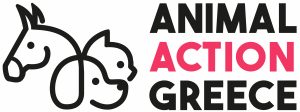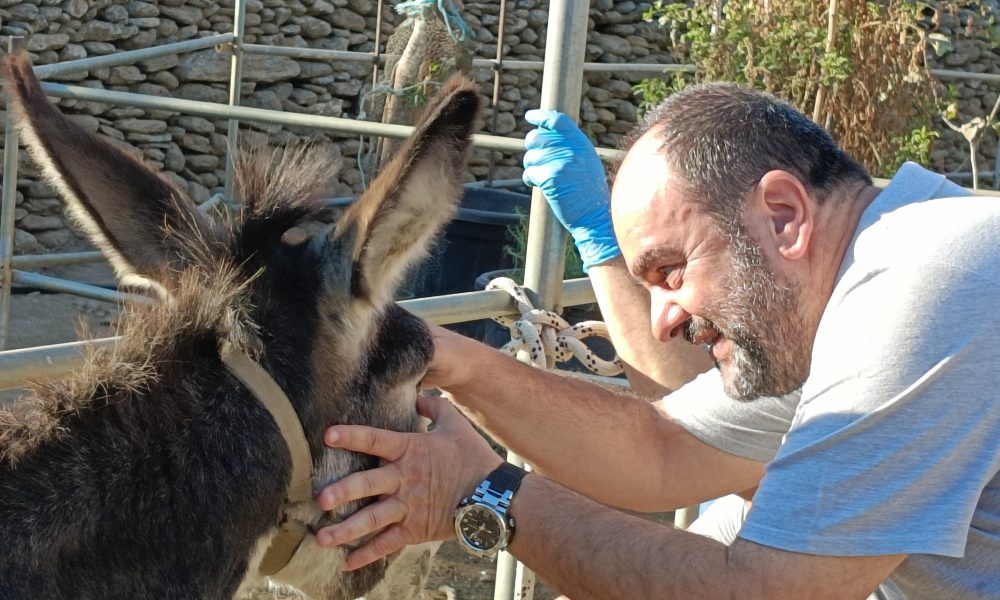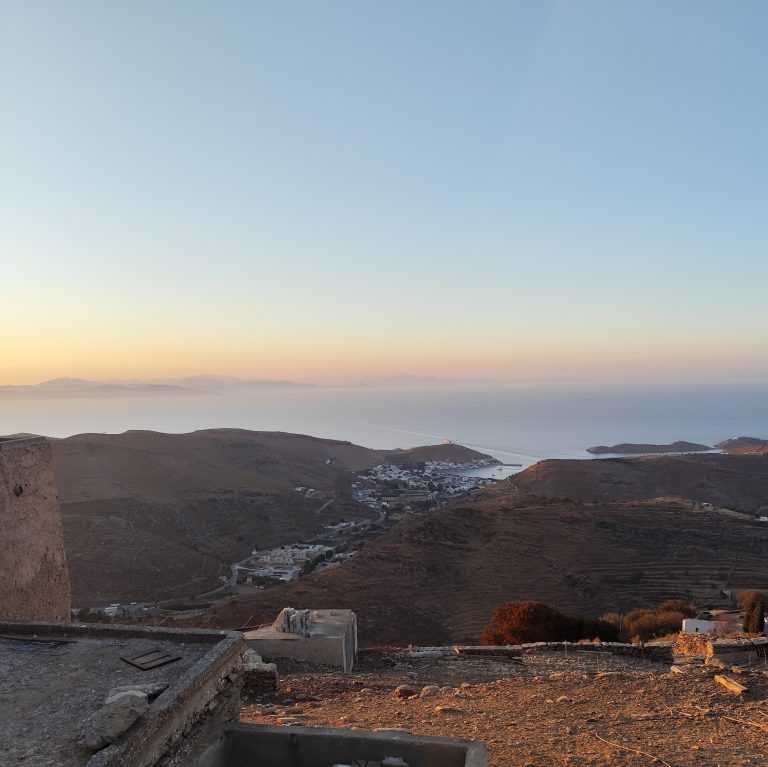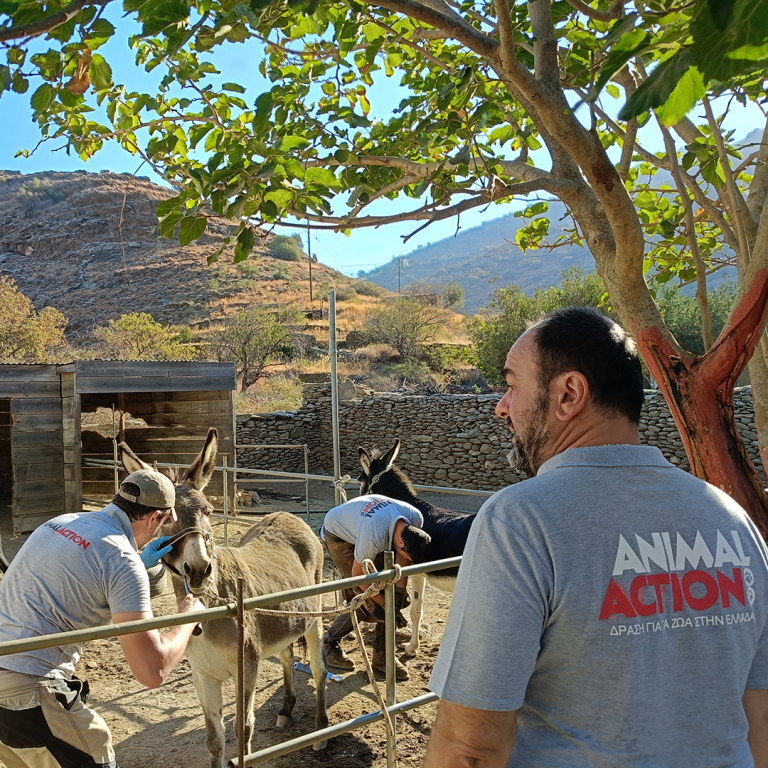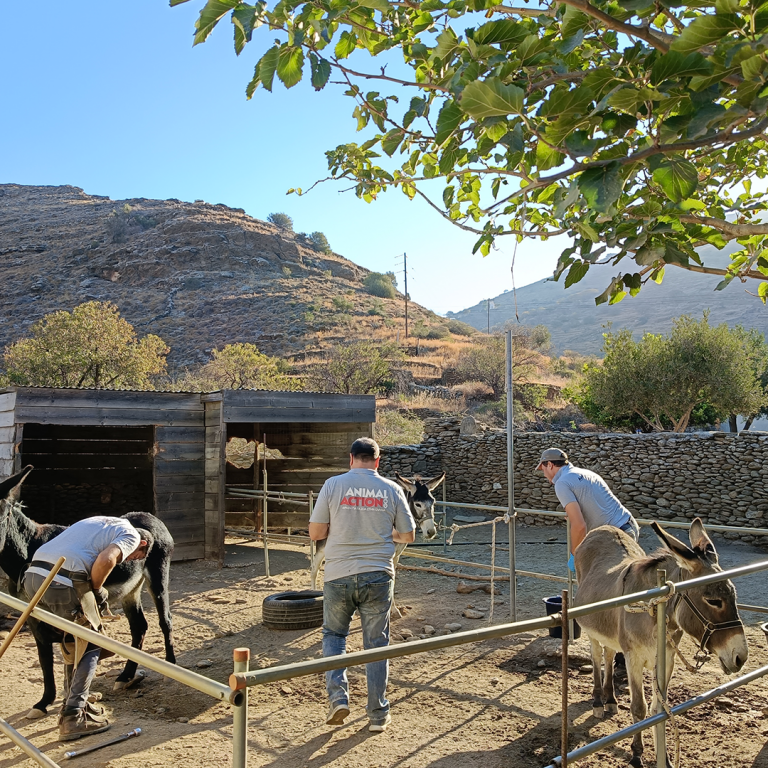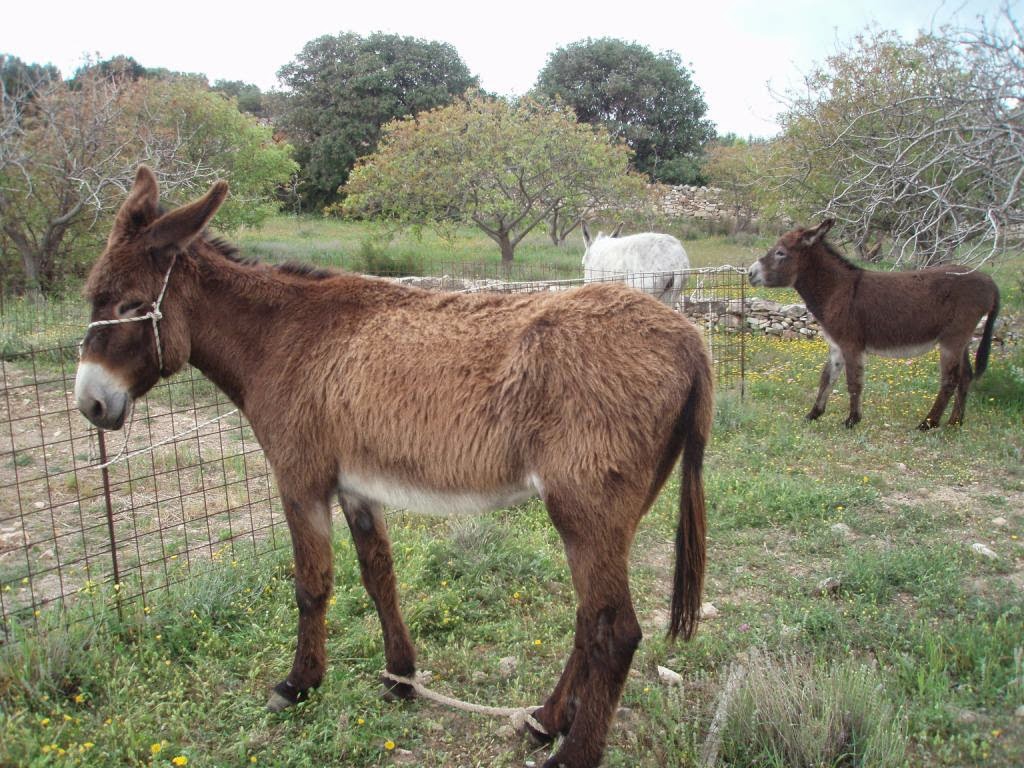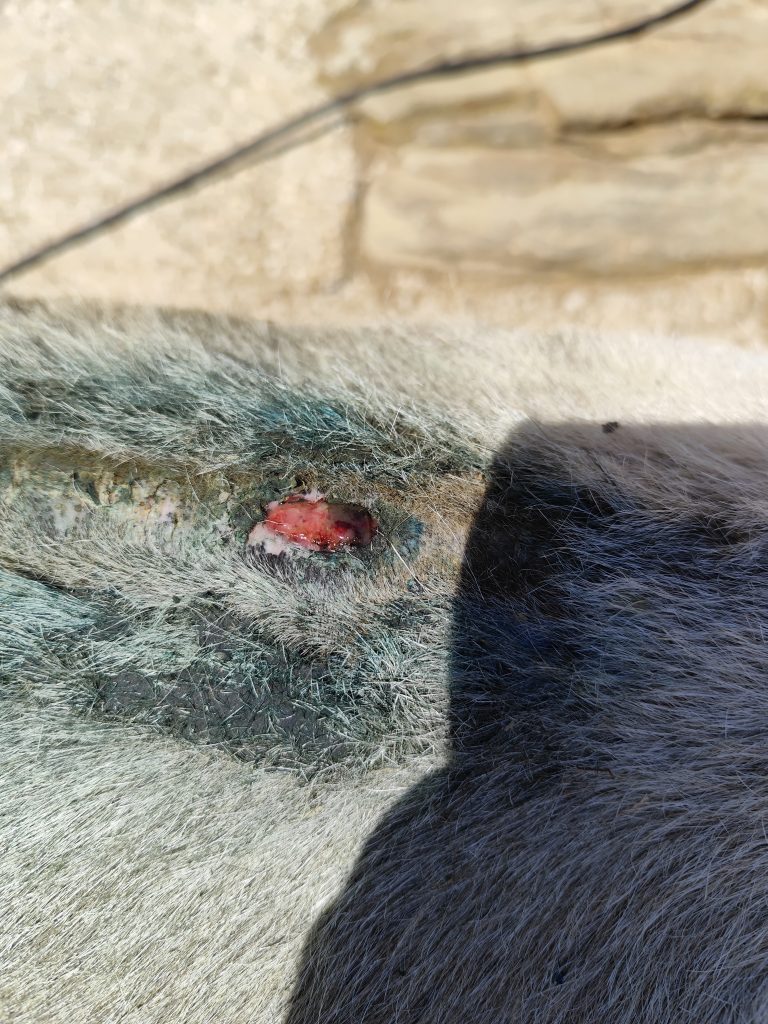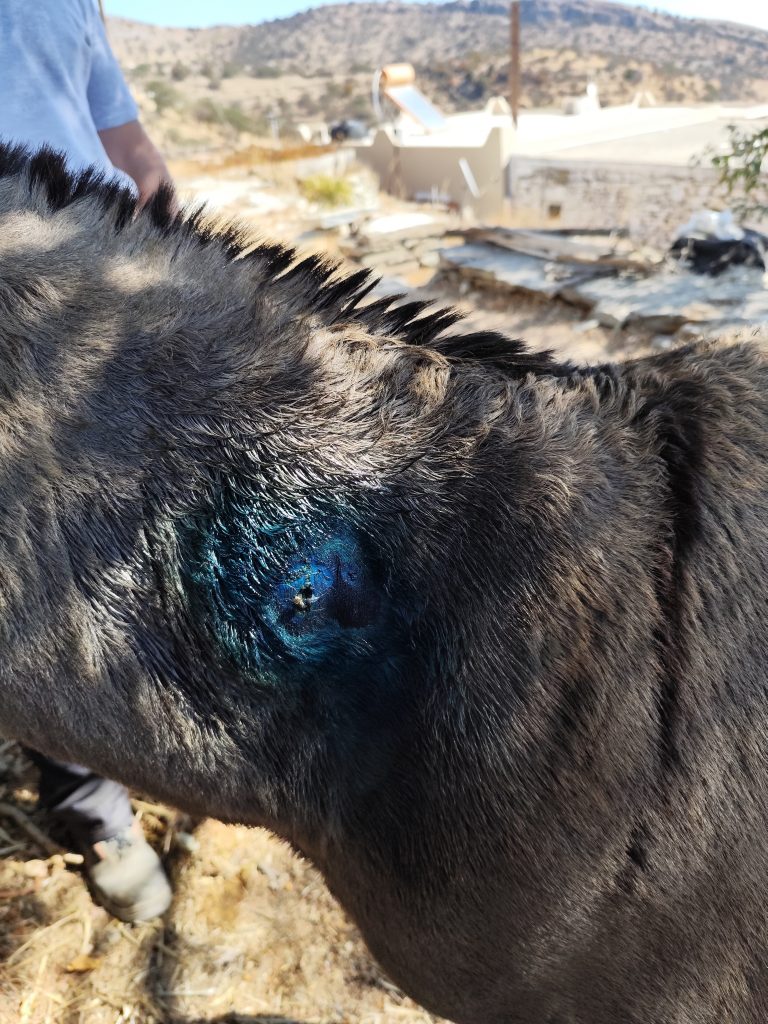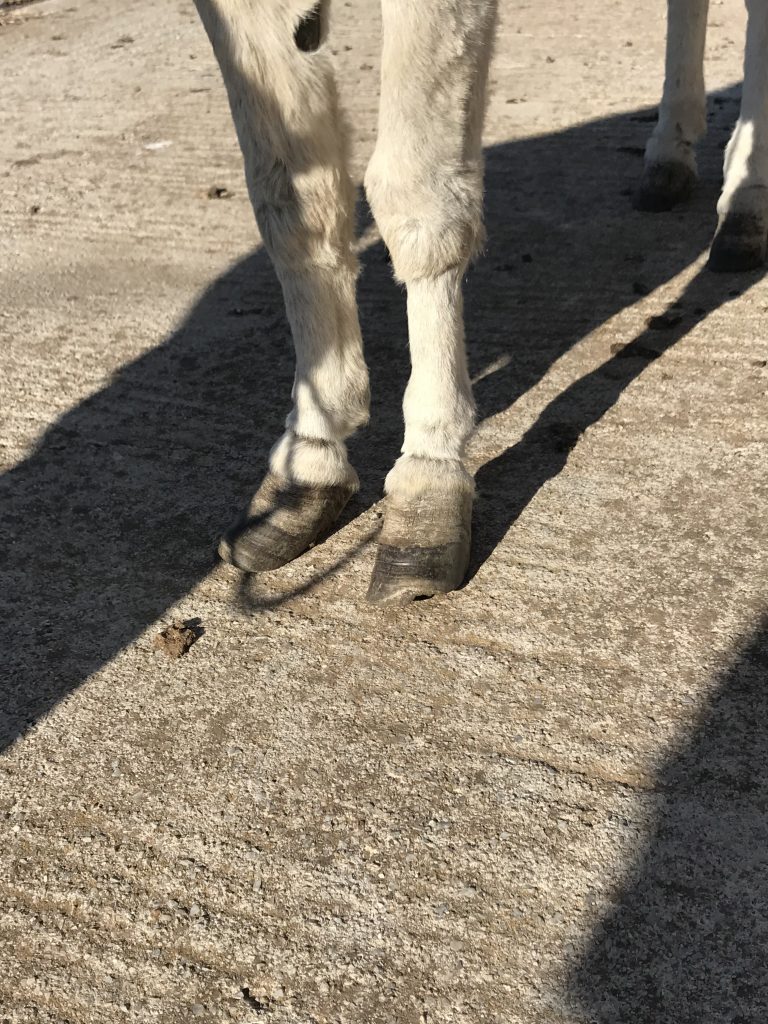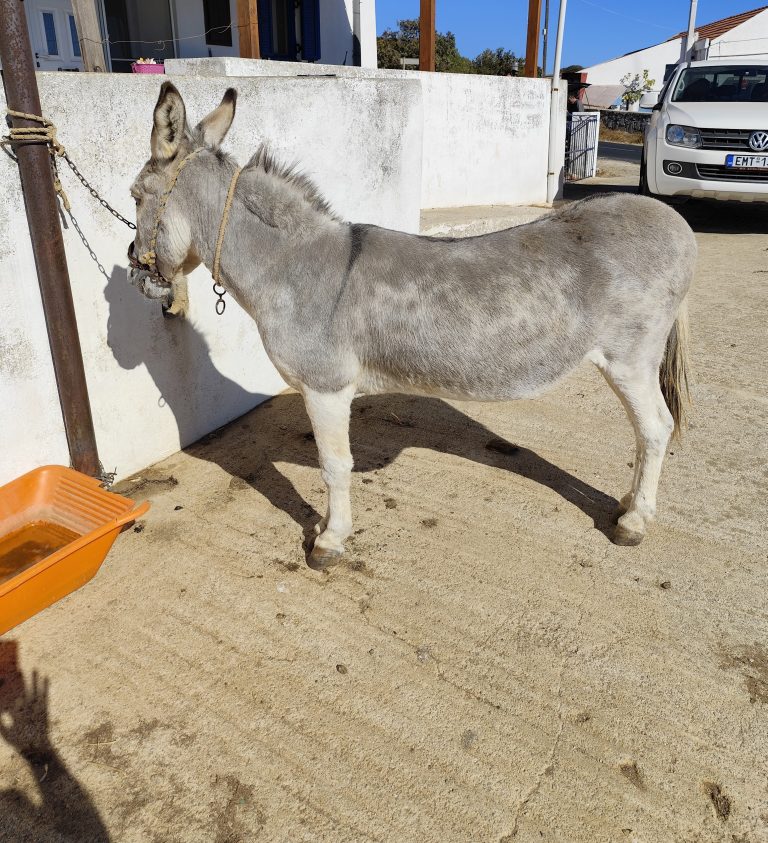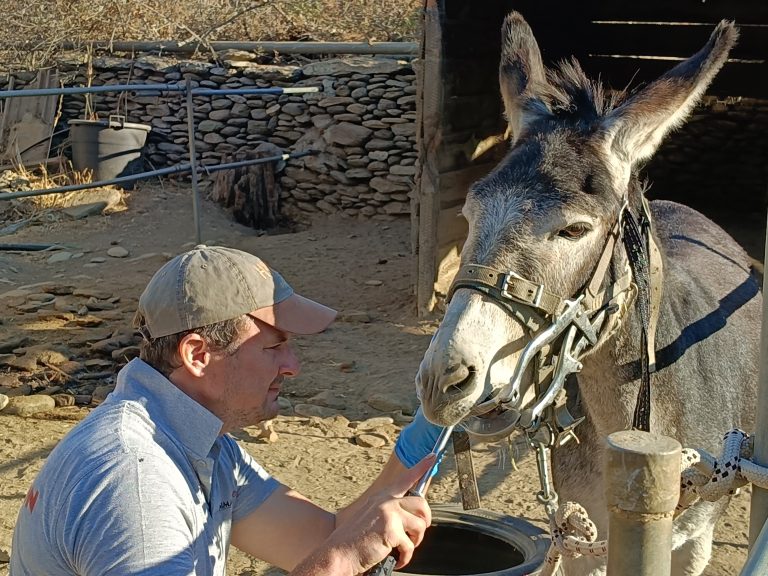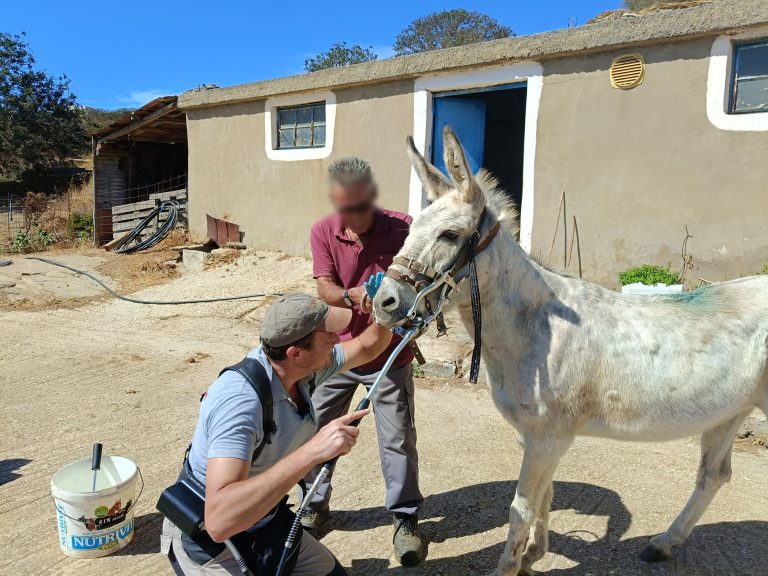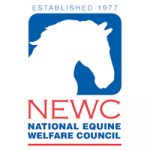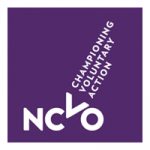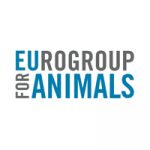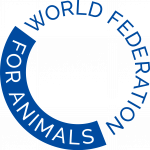In September 27-29, the Animal Action Greece team made a three-day visit to the island of Kea, in order to provide veterinary, dental and farriery care to the island’s equines.
The veterinarian Kostas Okkas, the equine dental technician Alkis Gkeskos and the farrier Tasos Skyllas offered their services to 57 equines of the island (32 donkeys, 17 mules and 8 horses), travelling around 17 villages, within three days.
This year the outreach visit in Kea took place in September, so as not to face the rainy and windy weather that the team had to fight against last year. Therefore, unlike previous visits, the weather was not dull and depressing but sunny and warm like in summer. The good weather affected positively not only the team’s mood but also that of the ‘patients’. Donkeys, mules and horses were relatively quite active and there was ‘love in the air’ amongst animals. As a result, some misbehaved, but none of us could blame them.
The island’s equines are used in agricultural tasks, transporting of goods, tourist riding or as pets. Out team’s annual visit helps promote the welfare of these animals and keep them in good health condition. Objectively, our team can tell the difference each year. Same as this year. Animals that previously had serious problems, were found significantly improved, as their owners seem to follow and apply our instructions as much as possible.
Almost all the owners we visited care for their animals. Most were young and showed interest to hear our instructions. The old practice of hobbling the animals is still present. Most of the owners have understood why this is harmful for the animal and that it is illegal, though several older ones continue to do it, mostly for safety reasons; they have not learnt how to handle their naughty animals, therefore hobbling their legs seems to save them from getting kicked. This is a practice that is absolutely needed to stop by training the owners how to handle correctly the animals from the young age and right from the beginning that they come in contact with humans. Moreover, some equines like escaping the short fences on the island, so hobbling seems to be the “favourite” solution for some of the owners, in order to prevent their animals from causing damage to neighbouring fields or running free causing an accident. We explained once again that in this case the installation of an electric fence can offer the solution they need; keep the animals inside the field and safe. This year our educational work paid back, as two of the owners offered themselves to cut the hobbles.
The majority of the animals seen were found in ideal body condition, with only 5 being underweight and 11 overweight. No serious health conditions were encountered, apart from two donkeys. One had open wounds and abscesses on his neck caused by intramuscular injections done incorrectly by the owner, who requested our team’s help. The wounds were treated and the correct way of injecting, as well as alternative injection sites, were shown to the owner by our vet Kostas. The second donkey was treated for an injury on his back, caused by the saddle pack. Useful antibiotic and healing crèmes were given to the owner, as well as advice to repair the saddle pack and not use it until the wound is completely healed.
Horse flies were found in many animals and antiparasitic treatment was used and advised to use routinely.
Regarding farriery, little work was needed for the equines working regularly, as they wear down their hooves. Their trimming by our farrier Tasos was mostly corrective to balance the hooves and offer comfort during work. 11 cases of long hooves, out of which 8 were overlong, were encountered again this year, with owners requesting our help. In spite of the strict time-limited schedule and difficulties, all the equines in need had their hooves trimmed and received the right medication and advice for chronic laminitis where necessary. Most of the ones that had been treated again the previous years, were found much improved, due to following the feeding advice given to them during our previous visits. But the one that was most fascinating was Sotiris, a grey donkey that was found with long hooves in 2022, in 2023 was amazingly improved and in 2024 he had completely healthy hooves!
The lack of farrier on the island is a big problem as many donkeys that don’t work anymore as they used to do and don’t wear their hooves down, now have overgrown hooves.
Regarding dental care, it had been programmed, since last year, for less than a handful of animals, that they would be sedated in order to do a more thorough dental work. The first animal to be done was a 10 year old horse with huge hooks on the upper front and lower back cheek teeth. Last year, the horse had been found in bad body condition, with limited strength to work. The front and, to some extent, the back hooks had been rasped with the electric equipment. This year, the horse was lively, had obtained a fine body score, having a shining coat and his owner expressed his gratitude for the transformation of his horse. Our dental technician Alkis reduced further the hooks, so as to gradually bring the teeth back to their original shape and size. Most of the examined animals required only the annual routine floating for sharp edges and, sometimes, small hooks. There were two cases of geriatric donkeys having ‘old’ mouths including ATR with sharp ridges. These required extra careful floating with the electric equipment. One of them, a female donkey more than 30 years old received careful treatment for a very ‘bad’ step mouth as well.
One case that surprised us was an elderly – 28 years old according to his owner – but very strong stallion donkey. He desperately needed hoof trimming due to overlong hooves, but he resisted in being touched anywhere by anyone. Despite his very old age, his young owner agreed to have him sedated, but due to the donkey’s excitement the sedation did not work fully. The team and the owner had to work hard to “convince” the stallion to have his feet trimmed and although in the end the work was done, unfortunately the latter managed to bite strongly his owner over the knee, rather than thank him for the opportunity to have his feet back to normal. His teeth were rasped manually, but a pointed back hook will require sedation for next year, right from the beginning so as to be effective, to be removed with the motorized equipment.
Finally, three more microchips were placed this year, while our team continues to educate the owners towards the necessity and their obligation according to the new law to microchip their equines.
Generally, this expedition gave the team some very hard times, such as small accidents due to some animals not having been handled sufficiently by their owners. Of course this outreach offered also many good moments to the team that left them with satisfaction regarding the Equine Programme’s purpose. For example, a few owners that in the previous years had initially been negative towards EDTs touching their equines’ mouths, this year asked specifically for the annual dental treatment. This is evidence that people in this mountainous agricultural island have started to appreciate the welfare of their working animals and that they realize dental health is important too. All owners expressed their gratitude and several donated to Animal Action Greece.
The team were happy to meet again with our most valuable local contact Giannis Mouzakis who, has helped organizing the outreach all the previous years, but this year unfortunately, was able to accompany them only during the last day. Many thanks to Eva Papadimitriou for her help during the visit and for offering our team a great dinner.
Due to the variety of equine uses and the beautiful landscape around the island, the outreach trip to Kea is always a marvelous adventure. We are looking forward to visiting again next year to see the improvements resulting from our services and educational work.
